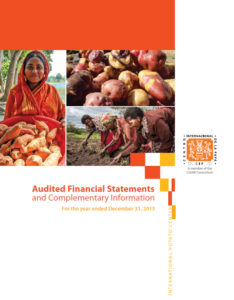Reporte Financiero 2015

Finanzas
A pesar de haber sido un año exitoso para la recaudación de fondos de la Ventana 3 y fondos bilaterales, el CIP reconoce que hubo una reducción en sus ingresos del 2015 debido a un recorte de fondos en las ventanas 1 y 2 del Fondo del CGIAR en comparación con 2014. Los ingresos totales reportados en 2015 fueron $58.5M, incluyendo $26.3M de las ventanas 1 y 2 (Ventana 1 y Ventana 2 en $13.8M y RTB en $12.5 M). Esto representa un descenso de $13.1M en comparación a 2014. Los estados financieros auditados del CIP se pueden obtener en línea en www.cipotato.org
Tasa de recargo: La tasa de costos indirectos del Centro fue de 15 por ciento para 2015. La relación se calculó siguiendo las Directrices Financieras N°5 y expresa la relación entre costos directos e indirectos.
Liquidez: El indicador de estabilidad financiera a largo plazo (niveles adecuados de reservas), que mide el número de días de activos netos no restringidos, fue de 92 días.
El informe completo en inglés se puede leer aquí.
